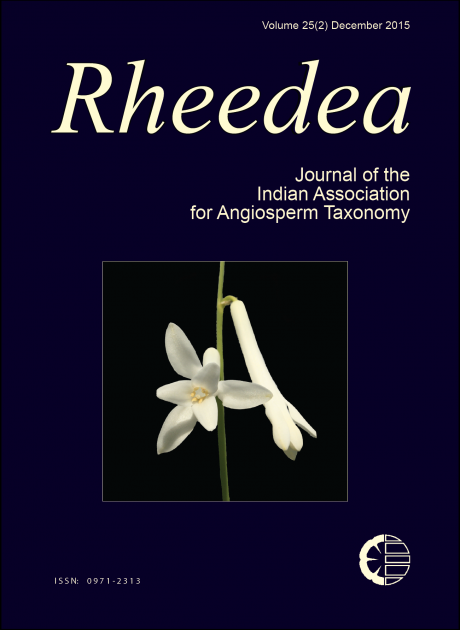Pollen morphology of selected taxa of the genus Solanum from Southern Western Ghats, Kerala, India
Anil Kumar V.S., Maya Nair C. & K. Murugan
Published on : 31-Dec-2015
DOI : https://dx.doi.org/10.22244/rheedea.2015.25.02.14
DownloadAbstract
Pollen morphology of 18 taxa of Solanum from Kerala has been analyzed on an evolutionary perspective on palynological relationship shared by the wild taxa and the cultivated ones. The exine ornamentation in wild germplasm ranges from spinulose (S. mauritianum Scop. and S. wendlandii Hook.f) to granulose (S. giganteum Jacq. and S. trilobatum L.), from synechinulate to striate echinulate in shrubby taxa and from echinulose to granulose in herbaceous forms. But the cultivar germplasm uniformly showed a mammilate – echinulate exine ornamentation with lax distribution of projecting elements. The stragglers and lianas of the germplasm viz. S. trilobatum, S. seaforthianum Andr. and S. wendlandii showed a tendency for multi-bridging at the colpi region and the trees, viz. S. giganteum, S. mauritianum and S. erianthum D.Don. showed ornamented colpi with slight tendency for bridging at the region of apertures. Traits like multibridging, compact exine ornamentation and prominent operculum characterize the wild species which makes them better adapted against environmental and biotic stresses. While the wild taxa have well developed aspis and operculum, the domesticated species such as S. melongena L. ‘Neelima’, S. mammosum L., S. macrocarpon L. and S. melongena L. var. insanum (L.) Praine. were having only a feebly developed aspis and operculum as an indication of less protection which in turn is an indication for secondary evolution.
